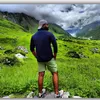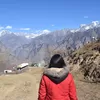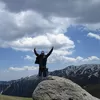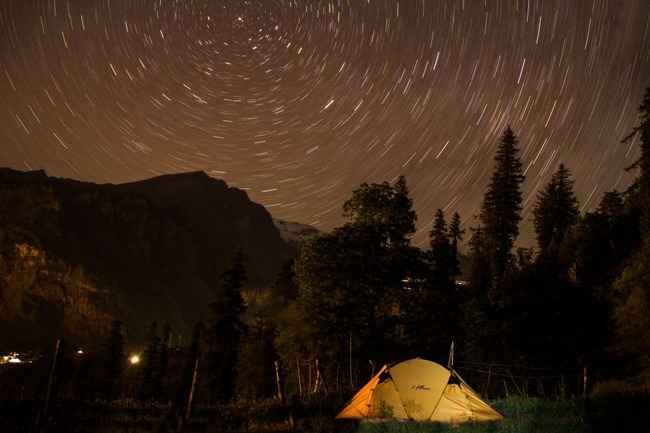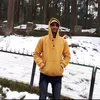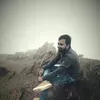Post
If you like mountains covered with clouds and a little rain then I think October is right time to go there.. you would get much greenery now.. different shades of green and yellow in mountains.. but if you like fresh weather then I think may-june would be bette..for snow you would have to go during winter.. 15-20 thousand is enough for ten days trip for one person..
If you like mountains covered with clouds and a little rain then I think October is right time to go there.. you would get much greenery now.. different shades of green and yellow in mountains.. but if you like fresh weather then I think may-june would be bette..for snow you would have to go during winter.. you can reach shimla,Kullu and Manali by boarding an overnight bus from Delhi..it would take 13-14 hour to reach Kullu and Manali and 8-9 hours to reach shimla.. 15-20 thousand is enough for ten days trip for one person..
You can opt for hampta pass and chandratal lake, himachal pradesh, for wonderful trekking experience. The budget will be around 20k per person. The best time to visit is from june to October, to feel the best weather and wonderful views.
The right time was winter ending and summer starting are the best time for tracking. and the budget was ₹5,000 to ₹10,000 depending in your place to travel
I want to go for Himalayas
First of all you have to chose which trek you want to do. every trek h its level of trekking like easy to hard. easy treks may varry in price around 4 to 6 thousand
moderate one go upto 9 to 12 thousand and hard one has no limits. best season for trek is between march to august 1st week in himalayas. for more query follow n message on insta @harsh_singhaao
If you wanna do winter trek than dec-march if summer trek may-sep and the cost depends where you have decided if you go with groups it will be a bit expensive if solo you can save
Depends on what type ofg trek u r looking for there are 3 factors:-
Budget,time and type of treks.
but mt suggestion avoid rainy season.
You can go for brighu lake trek I can provide you local guide on cheper rates and you have a local experience with my contact. DM me on tripoto if you need help🙂
I have done many treks you can check my blogs for budget friendly trips and best Himalayan treks.
The Himalayas offer the perfect location for trekking. The scenic vistas, snow-clad mountains, thick forests, and narrow trails offer the perfect balance between serenity and adventure. You can find plenty of exciting trekking routes in India that are pocket-friendly and within your capabilities. If you are looking for easy treks, you can head to Triund in Mcleodganj, Kedarkantha in Uttarakhand and Sandakphu trek in West Bengal-Nepal. If you are looking for moderate treks, then you can find Hampta Pass in Manali as a moderately challenging yet scenic trek. Besides that, you can also visit Roopkund in Uttarakhand, Goecha La, Har Ki Dun, Chandratal Lake, Prashar Lake, Nag Tibba, Chandrashila, Bhrigu Lake and Brahmatal trek. And if you want to test your limits and challenge yourself, then you can undertake the difficult treks such as Rupin Pass trek, Pin Parvati Pass trek and Chadar Trek. For more information, you can check out: https://www.tripoto.com/explore/trekking
Visit "Indiahikes" website and choose a date and trek at the cheapest rates. They would assist you to solve your queries. I suggest choose a trek in the month of May because that's the ideally weather for a beginner.
Budget : 8k to 10k
If you wish to go on a quick yet fun two days long himalayan trek then go for "Nag Tibba"
Budget : 4k to 5k
DM if you have any questions! Happy trekking!
Hi Nitin, Planning your trip
Thorough planning (or lack of it) can make or break a trip, so take the time to master your budget, time your trek and assemble the perfect itinerary. Design an itinerary Do your interests lie in centuries-old culture or do remote mountain passes appeal? For ancient monasteries, Ladakh or Little Tibet are the places to go. If you want to trek through luxuriant forests then consider exploring Sikkim. For spectacular mountain views, the little-trekked trails of the Garhwal are on par with the best in the Himalaya. Above all, don’t be too ambitious with your itinerary. Allow plenty of contingency days for acclimatisation, inclement weather, porters that disappear without notice for half a day, village celebrations, or taking an extra day to savour a stunning campsite. Understanding the Himalaya would take lifetimes to achieve, so don't expect to master the mountains on a single trip. Set your budget If you're trekking independently, work out the cost of hiring a guide, porters, food, accommodation and transportation - and then double it. That should take care of all other unforeseen costs that always seem to creep into a tight budget. If your arrangements are made by a trekking agency, plan to keep money at hand for tips (likely to come to 10% of your total budget). Time your trek March until June are often considered peak trekking season, but make sure you stay weather-aware throughout your trip. The Himalaya are subject to a weather pattern so complex that even experienced travellers can find themselves caught out. The regions of Himachal, Uttaranchal Darjeeling and Sikkim are subject to heavy monsoon rains so avoid July and August if possible. The Indian Himalaya also experience a long and cold winter from mid November until March – during this period, it’s best to head to Nepal. Safety first Your travel planning needs to go beyond government travel advisories. Trekking is a specialist activity so read up on acclimatisation (it could save your life) and don't assume you can rely heavily on your GPS when you're out there. Even the most detailed contour maps tend to be unreliable in some remote areas, so your best investment by far would be hiring an experienced local guide. Check your gear There's no one to impress in a remote mountain pass, so forget fashion and make sure your gear is sturdy enough to withstand the changeable mountain weather. There is no reason to invest in all the latest outdoor gear, provided your trekking gear is in good shape. Unlike Nepal, good gear still comes at a premium in India. If your arrangements are being made by an agent, double-check what is included. When in doubt you’re best to at least bring your own sleeping bag and sleeping mat and even your favourite (lightweight) tent. Tips for the trek
So you made it to the mountains; here's how to protect your gear, pace yourself and befriend the locals. Be positive and pace yourself Being in the right frame of mind is equally as important as your physical preparation. High altitudes aren't the place to unleash fraught emotions, so try to keep calm during frustrating moments, and leave enough leeway in your itinerary that you won't feel flustered if your plans go awry. Keep your trekking to the same pace as the locals. Your trekking mantra should be ‘short steps, deep breaths’, particularly when ascending steep passes or completing long uphill stretches. And don't cross rivers or swift flowing streams barefoot: your boots will always dry out, but sprained ankles equal end of trek. Protect your gear Use a sturdy kit bag for your trekking gear: these can easily be replaced after constant contact with thorn bushes, jagged rocks and being offloaded into dusty campsites, but don’t risk damaging your expensive rucksack (by having it strapped directly to a mule). And while it's tempting to walk with your camera at the ready, your chances of spotting a snow leopard on a distant ridge are on par with winning the lottery. Dusty trails and expensive cameras don’t mix, and a slip on the trail could result in untold damage to your photography gear. Keep your essentials at hand Always carry your water- and wind-proof jacket with you, together with a dry pair of socks and a spare sunhat (or two - they're all too easy to leave behind after a rest stop). A supply of stuff bags is a good investment, to ease the constant cycle of packing and repacking. Buy an umbrella locally, not just to keep off the sun and rain, but also to shield your modesty during mountainside bathroom breaks. Medical matters Bring your essential medication, but be selective about taking other medicines along with you. Many brands can be purchased without prescription in India. But whatever your medical background, do not treat local people. Except in extreme emergencies, you will do more harm than good. Supplying antibiotics may seem helpful, but it may discourage the patient from seeking long-term advice from a local doctor.
Related Questions For You
Earn credits when your answers are upvoted by others.
